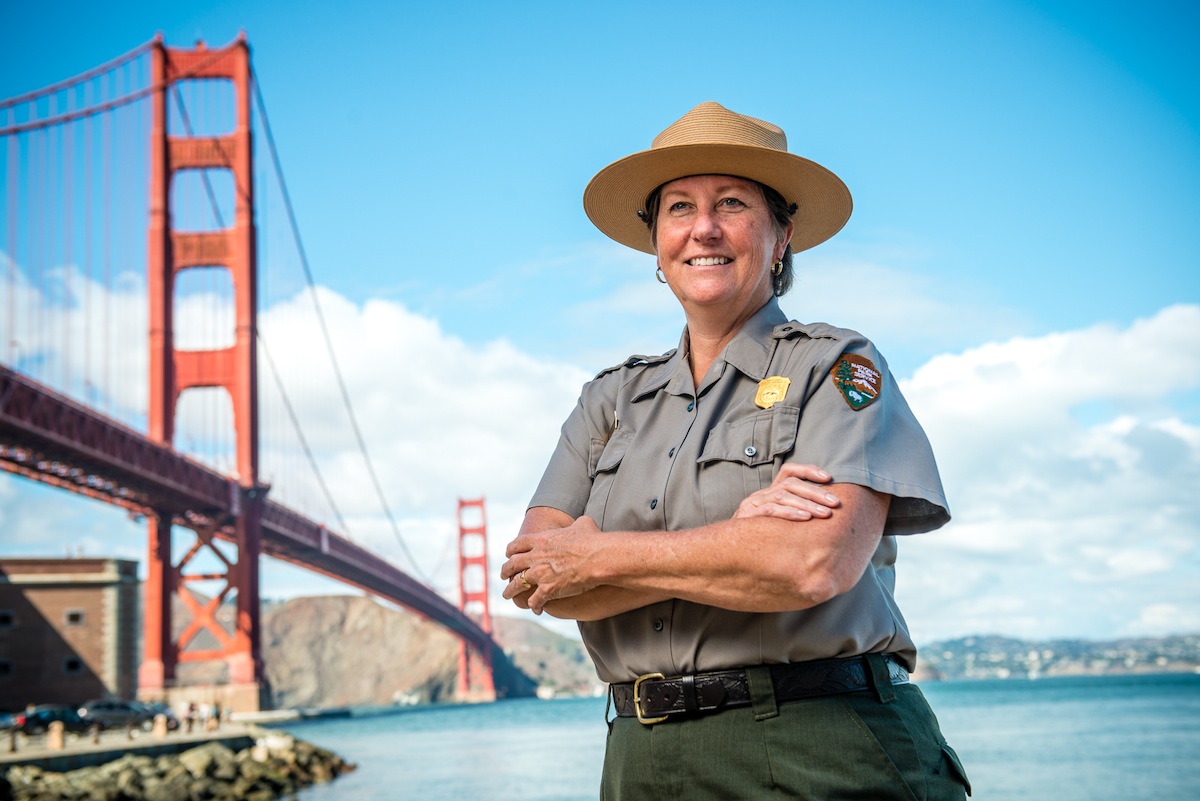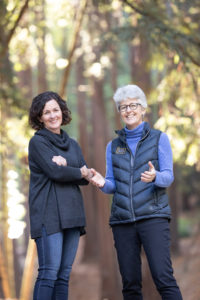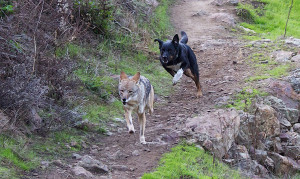The Golden Gate National Recreation Area, the largest urban national park in the nation, contains many of our most beloved and familiar spots — Crissy Field, Alcatraz Island, Muir Woods — but it’s hardly a typical national park.
GGNRA stitches together nearly two dozen distinct natural areas encompassing 80,000 acres from Marin to San Mateo, in one of the country’s most urbanized regions. In fact, GGNRA sees more visitors per year (18 million) than any other national park unit and that makes for some unique challenges, to put it lightly. Exhibit A: Just last week, the park released its long-awaited and controversial dog management plan, which puts new restrictions on off-leash dogs in favor of protecting areas for wildlife and visitors seeking pet-free experiences in nature.

Responsible for this plan, and for many other crucial decisions to come as the National Park Service enters its second century, is GGNRA’s superintendent, Christine Lehnertz. She was selected for that post last May after serving as NPS’ Pacific West regional director and before that as the deputy superintendent of Yellowstone National Park.
In an interview with Bay Nature, Lehnertz explains how GGNRA represents, in some key ways, the future of the National Park System.
Lehnertz will be the keynote speaker at Bay Nature’s Local Hero Awards Dinner on March 20, 2016.
Bay Nature: How far has the National Park Service come in the last 100 years?
Lehnertz: The Centennial is a great reminder of how much America has loved this whole idea of national parks — being able to celebrate our heritage together and the special places we protect. And it’s really also very much about the future. What does the next 100 years look like? And we are excited at Golden Gate National Recreation Area to be a part of the early side of that look, and that is through the youth we have to connect with. Both the National Park Service and so many of our partners are really focused on helping to find this next generation of park stewards and visitors and advocates.
What are the major initiatives that you see ahead?
We know that about 80 percent of the population in the United States is now living in urban areas, and so much of that is population living along the coast. People sometimes think of national parks as far-away destinations where you have to take a week or two weeks and really make a plan to go to Mount Rainier or Hawaii Volcanoes or Yellowstone. And so the second century really is, in part, focusing on the urban areas where we have parks. Out of the 50 largest cities in the United States, 40 of them have national park sites. So part of our refocusing is really helping people in urban areas even find the park at the end of their block, find a county or a state park. And really understand that parks are set aside for all of us and the opportunity to visit a national park might be closer than they think.
If that’s the word from above, that must mean good things for GGNRA because it’s really urban. Are you leading the way on that effort?
I think GGNRA really did open that door even earlier than when we started planning for the Centennial, in part because there were opportunities afforded by having so many strong partners. Look at Slide Ranch in Marin County, we have the Golden Gate National Parks Conservancy, we’ve got NatureBridge. So, I think in some ways the National Park Service is following GGNRA’s initiative to reach out to that next generation.
What do you think the next generation wants out of their national park experience?
My takeaway is that the next generation visiting parks today wants to design their park experience, just like they want to design other parts of their life. For some people, it’s “How can I serve here?” For other people it’s, “How can I bring my family and visit?” And for others it might be, “How do I find my way to become more and more familiar with this location that’s so close to my home?” So, a user-designed experience is where we’re going to be needing to look for this next century.
I think part of what’s unique is how the park service is responding to this emphasis. The Golden Gate National Parks Conservancy is creating an app about the GGNRA, so people can log on wherever they are and find whatever they’re interested in, as opposed to having a hard-copy brochure that you have to pick up at a visitor’s center. More than anything we’re trying to get in sync with how people are currently visiting or want to visit in the future. So it’s both a user driving the park service and the park service responding to the opportunity to reach more people.
You have an interesting background because you were at Yellowstone for a number of years and that’s an “old model” national park and then you came over here. What comparisons can you draw between being at Yellowstone and being in one of the most urban national park units in the system?
Golden Gate and Yellowstone actually have more in common than people might imagine. People envision Yellowstone as this big outdoor wilderness park and it is, because so much of it is wilderness. Only about two percent of Yellowstone is what we consider developed — it’s got hardscaping, it’s got asphalt, it’s got roads, parking, lodging, boardwalk — but 98 percent of the visitors to Yellowstone stay in that 2 percent area: They drive through the park, pull into incredibly scenic overlooks, they walk the boardwalk around the geysers. GGNRA is actually a lot like that. We have really high visitation in fairly confined areas and then we have lands that are trail-less, that are scenic overlooks overlooking ocean, cliff lands, forest lands, so there’s actually a lot in common in terms of how they are visited. There’s some density in those areas that are developed and a lot less visitation to areas that aren’t easy to get into.
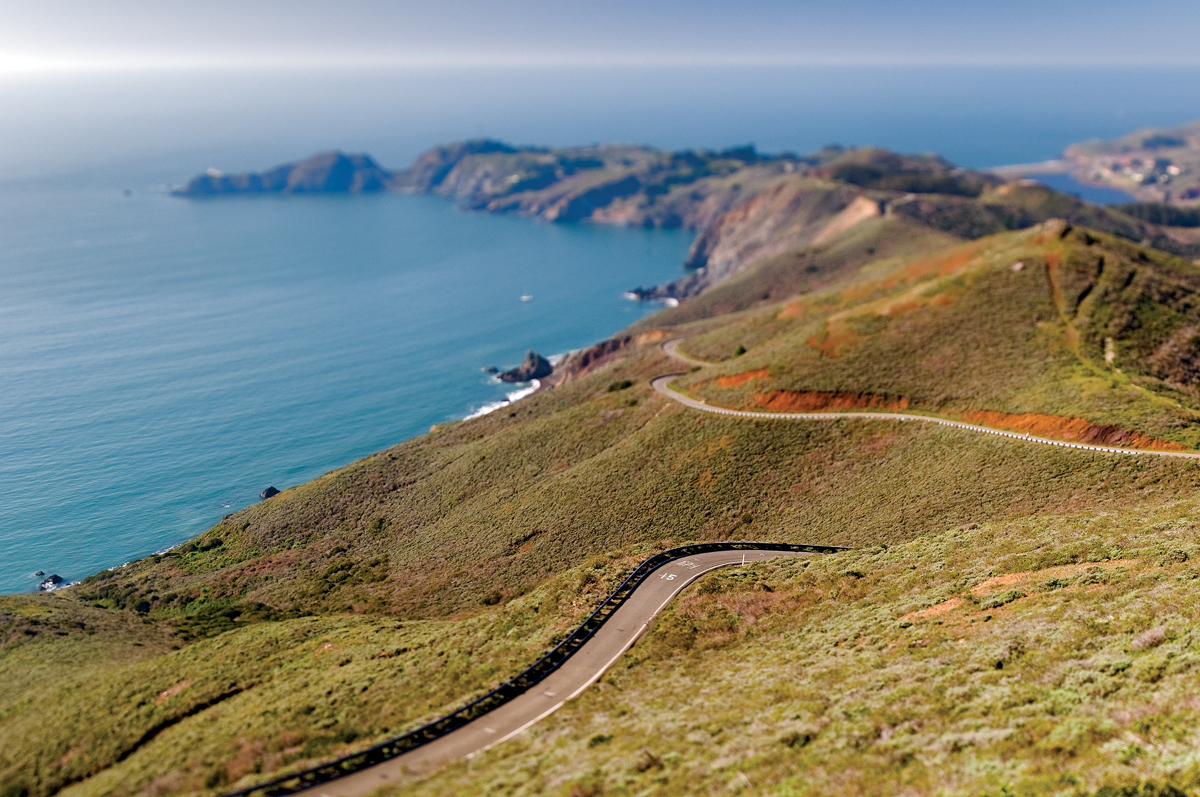
People really do see GGNRA as their backyard park. Without getting too much into the dog issue, that was one of the crux of the arguments there: that people want to use these national park areas as their neighborhood park. There are tough issues about being in an urban area that make it distinct, right?
Absolutely. You see a place like Yellowstone or Yosemite that were made from whole cloth. So, when Yellowstone was created there weren’t even states, it was the Wyoming Territory, versus Golden Gate, which was made from a number of different landscapes that came from other jurisdictions that were already managing the lands —from the Army, from the City of San Francisco, from Marin County. And so what that means is people who were already visiting and recreating there, bring their same habits and preferences into what becomes a more elevated protection for the land, a nationally significant story that’s protected through national parks. Of the 18 million visitors that come to Golden Gate, we know there are a lot of repeat visitors. That’s not as true as some of those places that are really destination parks.
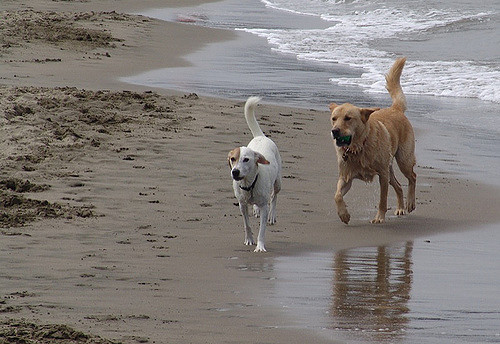
Do you feel like there’s going to be a clear resolution of the dog issue? Do you think people will settle into it?
There’s been a lot of deeply held feelings and expressed positions on all sides. At some point we just need to come to a place where the expectations are clear. We’ve been doing this planning process for 14 years and that makes it hard for people when it’s uncertain. So, in part, we have to get to a place where we’ve got some certainty.
What are some other tough issues ahead in this effort to forge a urban identity for the park system?
Another one we are working on is, how do you provide for both an inspiring and a well-planned visit? Muir Woods is a location where there are lots of concerns about parking. We’re trying to figure out what the best approach is to help people plan their visit through, for example, making a reservation at the park. Some of those urban issues that other parks haven’t had to deal with. In the Centennial we’re seeing a lot more visitations than most national parks and, when you’re already at almost 18 million visitors you have to start thinking about how to allot that experience so that it’s both meaningful and special. So a lot of it’s going to be around traffic, congestion, making that planning easier and giving people options, earlier in the day, later in the day, when they can have maybe a different experience than they might during peak visiting hours.
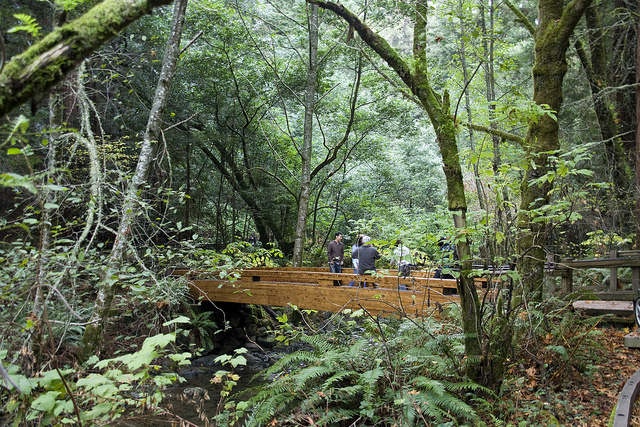
Are there any other spots besides Muir Woods that you might have to do that with?
Muir Woods is the only one we’re looking at right now and I would say we’re most of the way through that planning process. But it’s not going to get any easier. The Bay Area is going to go from 7.1 million people today to 9.2 million people in just 25 years. So we need to get out in front of that and be thinking about Stinson Beach, about Ocean Beach. All those areas that are already popular are just going to become more popular.
What are your favorite places to go?
You know, there’s so much that’s great about the park, like being outdoors in Crissy Field. But I have to say a place that really pulls on my heart is Fort Point National Park Site, at the south end of the Golden Gate Bridge, because it’s an extraordinary story about the history of the United States. It’s pre-Civil War, it was protected by the people who designed the Golden Gate Bridge because they thought it was so important. And it continues to be a surprising and stunning experience for visitors who make their way there.
There used to be a lightkeeper’s house and a bridge that went over to Fort Point, and you can just imagine what walking over that might have meant. In my dream world, someday in the future we would replace that bridge so people could actually have a walking experience over to that fort and understand what that would have been like. I think that would be so cool.
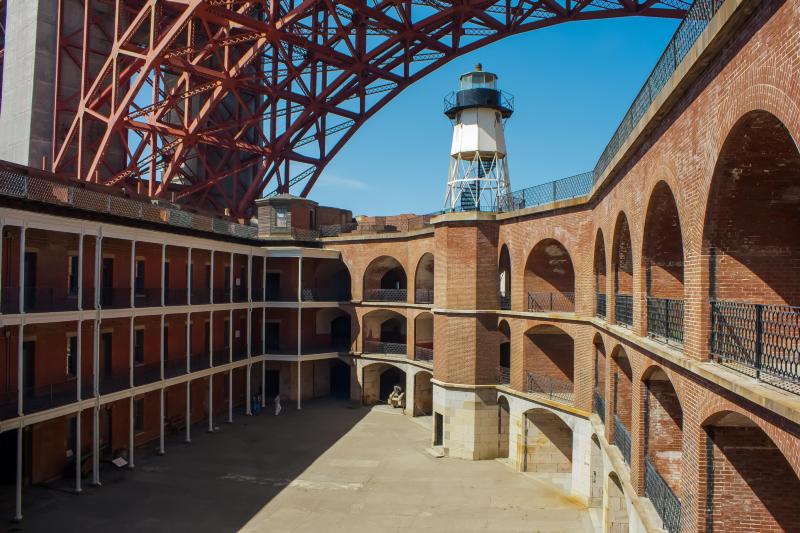
Is there anything else you’d like to mention?
Everybody, come out and enjoy your national park! I think with the dog piece, part of what we’re really trying to understand or help people with is, in a world that feels like it’s shrinking because there’s more and more of us, we’re really trying to focus on the theme that it’s ‘Fair to Share.’ And how we all get out here and make community around this place we love is going to be really important for its success in the future and making people feel comfortable with an opportunity to visit their national park.

